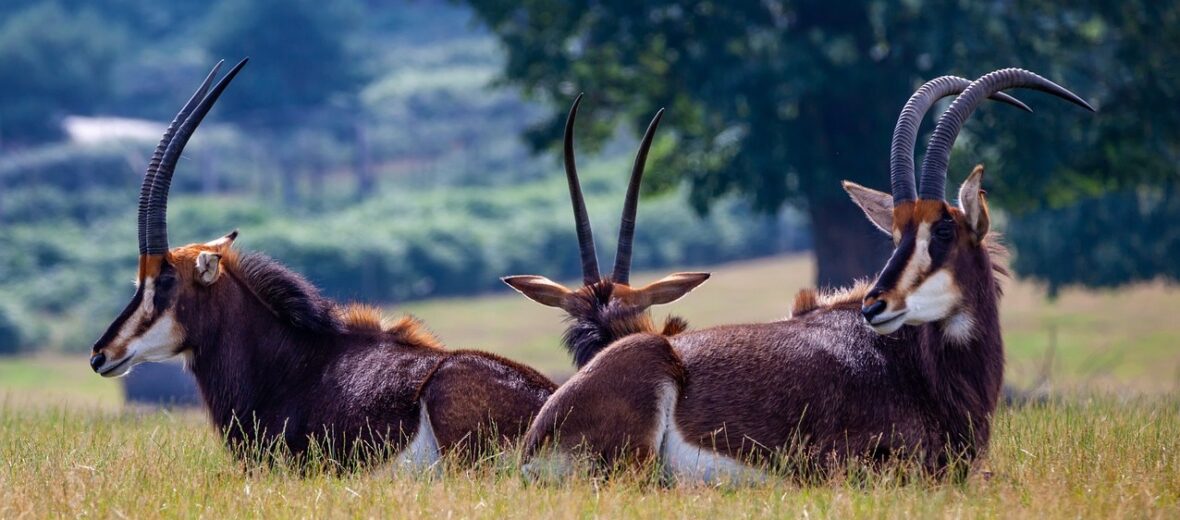
The sable antelope can be found in the southern Savanna regions of Africa. They prefer grasslands and savanna woodland habitats. These antelope go by many names such as kwalat and kwalata (Tswana), swartwitpens (Afrikaans), umtshwayeli (Ndebele), kgama and phalafala (Sotho), kukurugu, ngwarati (Shona), mBarapi and palahala (Swahili), iliza (Xhosa), and impalampala (Zulu). Even though they face the threats of habitat loss and destruction at the hands of residential and commercial developments, farming, and ranching; hunting; trapping; war; and civil unrest, these critters are still abundant enough to receive the listing of Least Concern by the IUCN.
First the Stats…
Scientific name: Hippotragus niger
Weight: Up to 600 lbs.
Length: Up to 100 inches
Height: Up to 56 inches, at the shoulders
Lifespan: Up to 22 years
Now on to the Facts!
1.) They number an estimated 60,000 wild individuals.
2.) These antelopes can be found in Angola, Botswana, DR Congo, Kenya, Malawi, Mozambique, Namibia, South Africa, Tanzania, Zambia, and Zimbabwe.
3.) A group of antelopes are called a herd.
4.) Sable antelopes are diurnal (active during the day), but tend to spend much of the day resting in the shade.
5.) Sables travel upwards of a mile each day in search of food, in herds of up to 30 individuals.
But wait, there’s more on the sable antelope!
6.) Herds are harem based, with 1 male and the rest females and their offspring.
7.) Males tend to stake claim to territories with an abundance of food, as this will inevitably attract more females.
Did you know…?
Sable antelopes can run at speeds of up to 43 mph!
8.) While typically shy and peaceful, they (especially the males) can become defensive and even aggressive if approached by a perceived threat.
9.) Foliage, medium-height grass, leaves, and herbs, primarily herbs growing on termite mounds are all on the menu for these herbivores (more specifically graminivores and folivores).
10.) Tree leaves make up to 90% of their diet. They will also gnaw on bones to gain calcium.
But wait, there’s still more on the sable antelope!
11.) Like all antelopes, they are polygynous (1 male mates with multiple females).
12.) Territories extend to about 1,640 feet in diameter and are defended by the male.
Did you know…?
A sable antelope is displayed on the Rhodesian flag as well as their coat of arms.
13.) Females undergo up to a 9 month gestation (pregnancy) that yields a single calf.
14.) The calf is left hidden in the tall grass and mom returns 1 – 2 times a day to suckle her calf; which is weaned in up to 6 months.
15.) In about 2 weeks time the calf is strong enough to keep up with the herd.
16.) Lions, leopards, hyenas, African wild dogs, and crocodiles all prey on these antelopes.
Now a Short Sable Antelope Video!
Be sure to share & comment below! Also, check out the Critter Science YouTube channel. Videos added regularly!
Want to suggest a critter for me to write about? Let me know here.
Some source material acquired from: Wikipedia & IUCN



